13 Best Herbal Teas For Leg Cramps
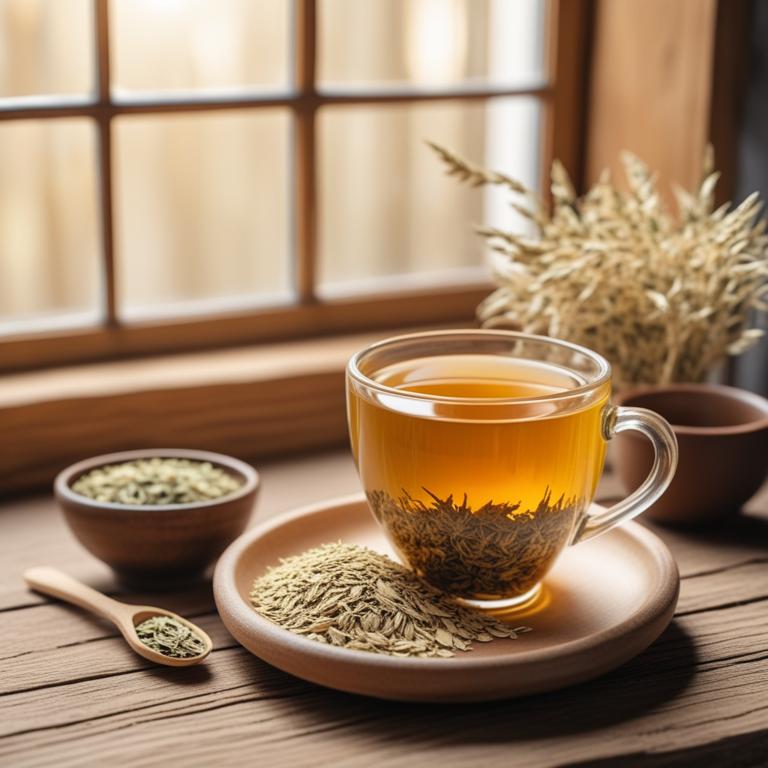
Herbal teas for leg cramps are a natural remedy that involves brewing tea from herbs to alleviate muscle spasms and cramps in the legs.
These teas can treat leg cramps effectively due to their ability to relax muscles, reduce inflammation, and replenish essential minerals.
Examples of herbal teas used to treat leg cramps include ginger tea, which reduces inflammation and relaxes muscles; dandelion tea, which replenishes potassium and reduces muscle spasms; peppermint tea, which relaxes muscles and reduces muscle cramps; chamomile tea, which soothes and calms the muscles; and passionflower tea, which reduces muscle spasms and promotes relaxation.
Additionally, other herbal teas such as valerian root tea, lavender tea, and turmeric tea can also help to alleviate leg cramps due to their anti-inflammatory and muscle-relaxing properties.
Related Study
According to "Phytomedicine : international journal of phytotherapy and phytopharmacology", teas for leg cramps may be beneficial as flavonoid extracts, such as those found in Colladeen, have shown significant improvement in subjective "leg health" scores.
Below there's a list of the 13 best herbal teas for leg cramps.
Table of Contents
- 1. Valeriana officinalis teas
- 2. Zingiber officinale teas
- 3. Glycyrrhiza glabra teas
- 4. Lavandula angustifolia teas
- 5. Avena sativa teas
- 6. Passiflora incarnata teas
- 7. Mentha x piperita teas
- 8. Cinchona officinalis teas
- 9. Foeniculum vulgare teas
- 10. Piper nigrum teas
- 11. Melissa officinalis teas
- 12. Hypericum perforatum teas
- 13. Ginkgo biloba teas
Also, you may be interested in...
Today Free Bonus!
The Ultimate Herb Drying Checklist
(For Long-Lasting Powerful Medicinal Effect)
How to easily dry herbs that don't mold and that keep their strong medicinal power for more than 1 year.
1. Valeriana officinalis teas
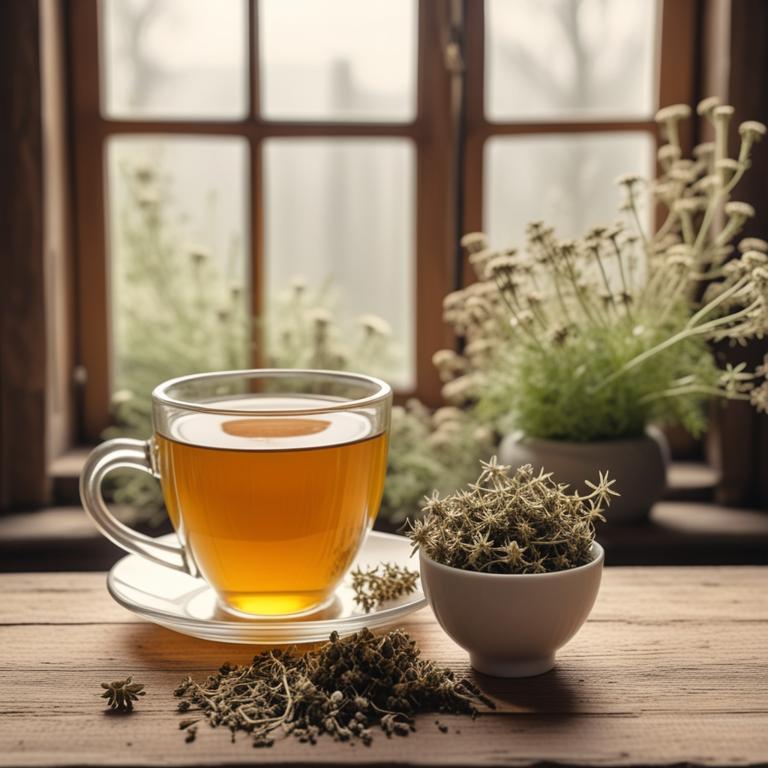
Valeriana officinalis teas have been traditionally used to treat leg cramps due to their relaxing and calming properties, which help to soothe muscle spasms and reduce muscle tension.
The bioactive constituents of Valeriana officinalis, including valerenic acid, isovaleric acid, and valeranone, have been shown to have a sedative effect on the nervous system, which contributes to their muscle-relaxing properties.
By promoting relaxation and reducing muscle spasms, Valeriana officinalis teas can help to alleviate the pain and discomfort associated with leg cramps.
The benefits of using Valeriana officinalis teas to treat leg cramps include their natural and non-addictive properties, making them a popular choice for individuals seeking a safe and effective alternative to pharmaceutical treatments.
Recipe:
- Gather 1 cup of boiling water and 1 teaspoon of dried Valeriana officinalis root.
- Steep the root in the boiling water for 5-7 minutes.
- Strain the liquid into a cup using a tea strainer or cheesecloth.
- Add 1 tablespoon of honey (optional) to the liquid if desired.
- Drink the tea 1-2 times a day for leg cramp relief.
Valeriana officinalis teas can be used to treat leg cramps, but possible side effects may include dizziness, stomach upset, and interactions with certain medications, especially those used to treat depression and anxiety.
To use Valeriana officinalis teas safely, it is recommended to start with a low dose and gradually increase as needed, and to avoid consuming them before bedtime or with other sedatives.
Valeriana Officinalis Tea on Amazon
Frontier Co-op Cut and Sifted Valerian Root 1lb, Kosher - for Valerian Root Tea, DIY Supplement Capsules, Bedtime Formulas and Sleep Pillows
Disclaimer: We earn a commission if you click this link and make a purchase at no additional cost to you.
2. Zingiber officinale teas

Zingiber officinale teas, also known as ginger teas, have been traditionally used to treat leg cramps due to their anti-inflammatory and analgesic properties.
The bioactive constituents of ginger, including gingerols and shogaols, help to reduce muscle spasms and relax the muscles, thereby alleviating cramp symptoms.
The benefits of ginger teas in treating leg cramps include reducing muscle pain and inflammation, as well as improving blood circulation and nerve function.
Regular consumption of ginger teas may also help to prevent recurring leg cramps by maintaining a healthy balance of electrolytes and minerals in the body.
Related Study
According to "Arthritis and rheumatism", Zingiber officinale teas may be effective in reducing symptoms of knee pain, including possibly leg cramps, as it was found to have a statistically significant effect on reducing symptoms of osteoarthritis of the knee in a study.
Recipe:
- Gather 1 tablespoon of dried ginger root and 1 cup of boiling water.
- Add the ginger root to the boiling water and let it steep for 5-7 minutes.
- Strain the tea into a cup and discard the ginger root.
- Add honey or lemon to taste, if desired.
- Drink the tea as needed to relieve leg cramps.
Zingiber officinale teas can be used to treat leg cramps, but it may cause side effects such as dizziness, nausea, and stomach upset due to its active compound, gingerol, which can irritate the digestive system.
To use Zingiber officinale teas safely for leg cramps, it's recommended to start with a small dose, drink it in moderation, and avoid taking it before or after surgery and during pregnancy.
Zingiber Officinale Tea on Amazon
FGO Organic Ginger Tea, 100 Count, Eco-Conscious Tea Bags, Caffeine Free, Packaging May Vary (Pack of 1)
Disclaimer: We earn a commission if you click this link and make a purchase at no additional cost to you.
3. Glycyrrhiza glabra teas

Glycyrrhiza glabra teas have been traditionally used to treat leg cramps, a common and often debilitating symptom that can affect individuals of all ages.
The anti-inflammatory and antioxidant properties of this herbal preparation help to reduce muscle spasms and alleviate pain, making it an effective remedy for this ailment.
The bioactive constituents of Glycyrrhiza glabra, including glycyrrhizin, flavonoids, and saponins, contribute to its therapeutic effects by modulating ion channels and reducing excitability of muscle cells.
By using Glycyrrhiza glabra teas, individuals can benefit from a natural and safe treatment option for leg cramps, promoting relaxation and reducing the severity of symptoms.
Recipe:
- Gather 2 tablespoons of dried Glycyrrhiza glabra root and 1 cup of boiling water.
- Steep the root in the boiling water for 5-7 minutes.
- Strain the liquid and discard the root.
- Add honey or lemon to taste, if desired.
- Drink 1 cup of the tea 2-3 times a day to help with leg cramps.
Glycyrrhiza glabra teas can be used to treat leg cramps, but using them for an extended period may cause potential side effects such as water retention, high blood pressure, and changes in potassium levels in the body.
Precautions should be taken when using these teas, including limiting their consumption to no more than 1-2 cups per day and monitoring one's blood pressure, as excessive consumption can lead to adverse effects.
Glycyrrhiza Glabra Tea on Amazon
Pukka Herbal Teas Licorice and Cinnamon - 20 Bags, 20 Count
Disclaimer: We earn a commission if you click this link and make a purchase at no additional cost to you.
4. Lavandula angustifolia teas

Lavandula angustifolia teas have been used traditionally to treat leg cramps due to their soothing and calming properties.
The herbal preparation helps to treat this ailment by relaxing muscle spasms and improving sleep quality, which are often underlying causes of leg cramps.
The bioactive constituents of Lavandula angustifolia teas, including linalool and linalyl acetate, possess anti-inflammatory and antispasmodic properties that help to alleviate muscle tension and reduce pain.
Regular consumption of Lavandula angustifolia teas can provide relief from leg cramps, promote relaxation, and improve overall well-being.
Recipe:
- Gather 1 cup of dried Lavandula angustifolia flowers.
- Measure 2 tablespoons of dried Lavandula angustifolia flowers and place them in a tea infuser.
- Heat 1 cup of water in a pot until it reaches 212°F (100°C).
- Steep the Lavandula angustifolia flowers in the hot water for 5-7 minutes.
- Strain the tea and drink 1 cup, 2-3 times a day to help relieve leg cramps.
Lavandula angustifolia teas can be used to help alleviate leg cramps due to its muscle relaxing properties, however, possible side effects may include drowsiness, digestive issues, and allergic reactions in some individuals.
To use Lavandula angustifolia teas safely, it is recommended to start with small amounts, monitor your body's response, and avoid consuming it before driving or operating heavy machinery, especially if you are sensitive to its sedating effects.
Lavandula Angustifolia Tea on Amazon
Tiesta Tea - Lavender Chamomile Herbal Tea | Loose Leaf | Calming Blend with Chamomile and Lavender | Caffeine-Free Herbal | Great for Hot or Iced Brews | Resealable Bulk Pouch, 200 Cups | 8 Ounce
Disclaimer: We earn a commission if you click this link and make a purchase at no additional cost to you.
5. Avena sativa teas
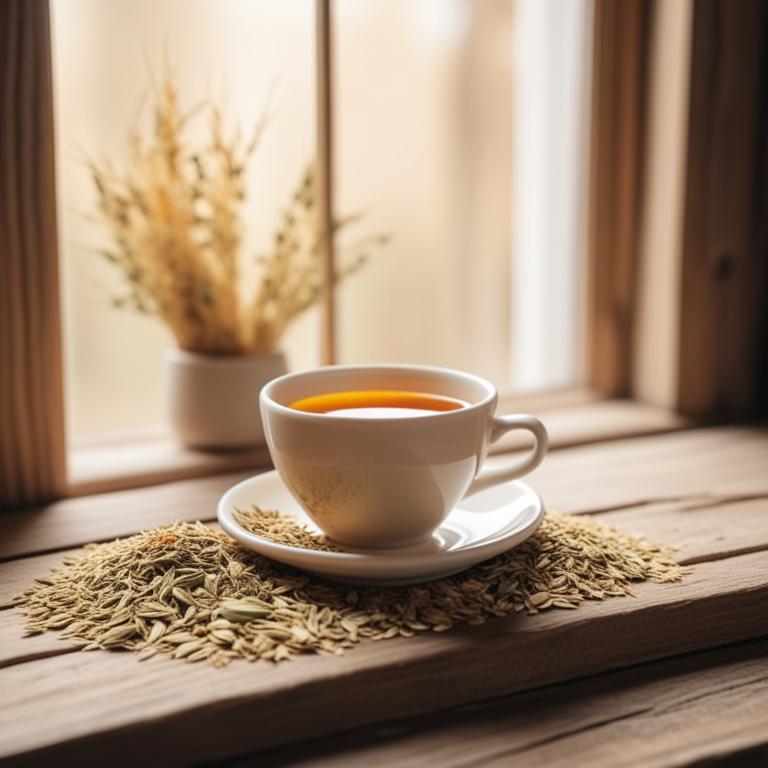
Avena sativa teas, derived from the oat plant, have been traditionally used to alleviate leg cramps by providing relief from muscle spasms and promoting relaxation.
The herbal preparation's sedative and muscle relaxant properties are attributed to its ability to calm the nervous system and reduce muscle tension.
The bioactive constituents, including avenanthramides and avenacosides, play a crucial role in soothing muscle cramps by inhibiting the release of acetylcholine, a neurotransmitter that can trigger muscle contractions.
Regular consumption of Avena sativa teas has been found to provide long-term benefits in managing leg cramp episodes and promoting overall muscle health.
Recipe:
- Gather 2 tablespoons of dried Avena sativa root powder and 1 cup of boiling water.
- Add the Avena sativa powder to a teapot or cup and pour in the boiling water.
- Let the mixture steep for 5-7 minutes to allow the ingredients to infuse.
- Strain the tea into a cup using a tea strainer or cheesecloth to remove the powder.
- Drink the tea as needed, ideally before bedtime, to help prevent leg cramps.
Avena sativa teas can help alleviate leg cramps due to their sedative and relaxing properties, but they may also cause side effects such as dizziness, headaches, and nausea in some individuals.
To use Avena sativa teas safely, it is essential to start with small doses, avoid taking them before driving or operating heavy machinery, and monitor your body's response to the herbal preparation.
Avena Sativa Tea on Amazon
4 oz. Oatstraw Tea Oat Straw Herb Tea Loose Leaf (Avena sativa L.) - 113g Oat Straw Herb Hierba de paja de avena
Disclaimer: We earn a commission if you click this link and make a purchase at no additional cost to you.
6. Passiflora incarnata teas
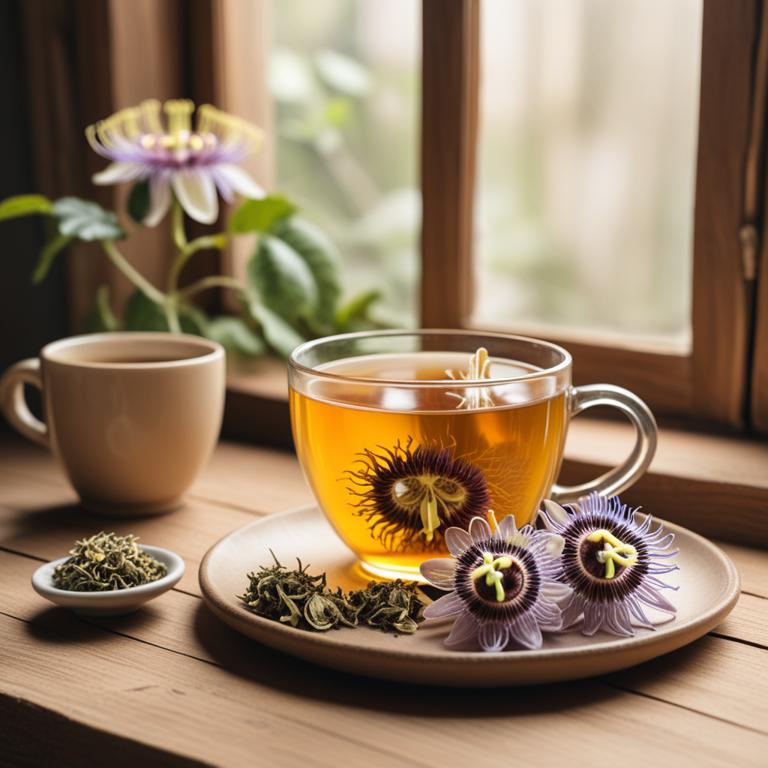
Passiflora incarnata teas have been traditionally used to treat leg cramps due to their analgesic and anti-inflammatory properties, which help to relieve muscle spasms and reduce pain.
The bioactive constituents present in this herbal preparation, including flavonoids, alkaloids, and glycosides, contribute to its therapeutic effects by modulating the nervous system and relaxing muscles.
By reducing muscle tension and inflammation, Passiflora incarnata teas help to alleviate the discomfort and pain associated with leg cramps, promoting relaxation and reducing the frequency of episodes.
The benefits of using Passiflora incarnata teas to treat leg cramps include reduced pain intensity, improved sleep quality, and enhanced overall well-being, making it a popular natural remedy for this common condition.
Recipe:
- Gather 1 cup of fresh Passiflora incarnata leaves or 1 teaspoon of dried leaves.
- Heat 1 cup of water in a pot until it boils.
- Add the Passiflora incarnata leaves to the boiling water.
- Reduce the heat and let it simmer for 5-7 minutes.
- Strain the tea and drink 1/2 cup, 2-3 times a day to help with leg cramps.
Passiflora incarnata teas can be an effective remedy for treating leg cramps, but they may cause side effects such as drowsiness, dizziness, and stomach upset due to their sedative and antispasmodic properties.
To use Passiflora incarnata teas safely, it is essential to start with a low dose and gradually increase as needed, avoid consuming it before driving or operating heavy machinery, and be cautious when combining it with other medications or substances that can exacerbate its sedative effects.
Passiflora Incarnata Tea on Amazon
Traditional Medicinals Organic Nighty Night Tea, 16 Tea Bags (Pack of 1)
Disclaimer: We earn a commission if you click this link and make a purchase at no additional cost to you.
7. Mentha x piperita teas
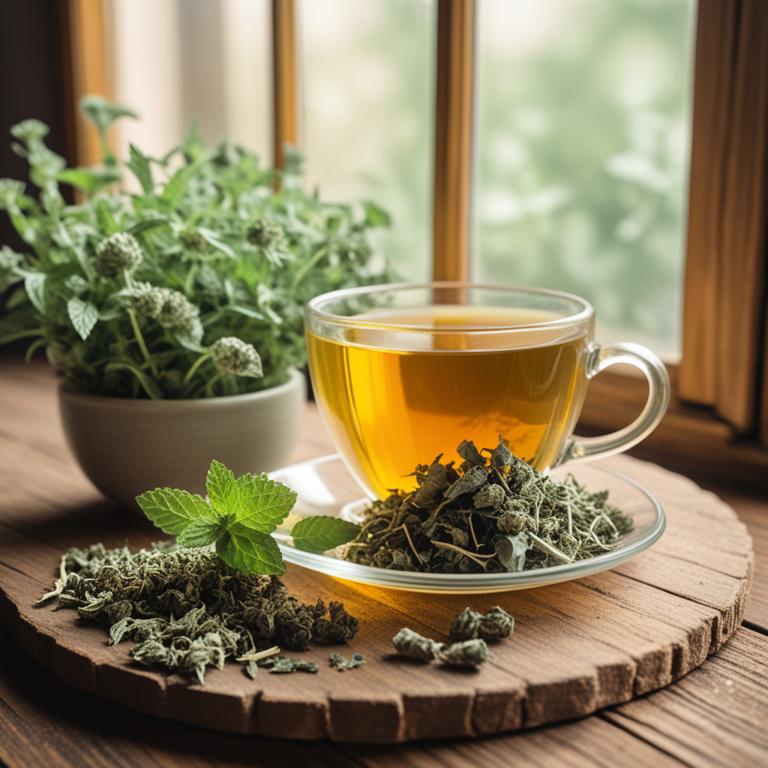
Mentha x piperita teas, also known as peppermint tea, have been traditionally used to treat leg cramps due to their analgesic and anti-inflammatory properties.
The bioactive constituents of peppermint tea, including menthone, menthol, and limonene, help to relax muscles and reduce muscle spasms, thereby alleviating leg cramps.
The antispasmodic properties of peppermint tea also help to prevent muscle cramps by reducing muscle tone and improving blood circulation, providing relief from the debilitating pain associated with leg cramps.
Regular consumption of peppermint tea has been found to be beneficial in treating leg cramps, offering a safe and natural alternative to conventional medications.
Related Study
According to "Phytomedicine : international journal of phytotherapy and phytopharmacology", Mentha x piperita teas for leg cramps may be beneficial due to significant improvements in subjective "leg health" scores after flavonoid treatment.
Recipe:
- Gather 1 cup of fresh peppermint leaves and 1 cup of boiling water.
- Steep the peppermint leaves in the boiling water for 5-7 minutes.
- Strain the mixture and discard the peppermint leaves.
- Add 1 tablespoon of honey (optional) to the tea and stir well.
- Drink the tea as needed to relieve leg cramps.
Mentha x piperita teas can be used to treat leg cramps due to its muscle-relaxing properties, but possible side effects may include gastrointestinal upset, nausea, and dizziness.
Precautions should be taken when using Mentha x piperita teas to treat leg cramps, including being cautious with excessive consumption, as it may interact with certain medications and exacerbate conditions such as high blood pressure.
8. Cinchona officinalis teas
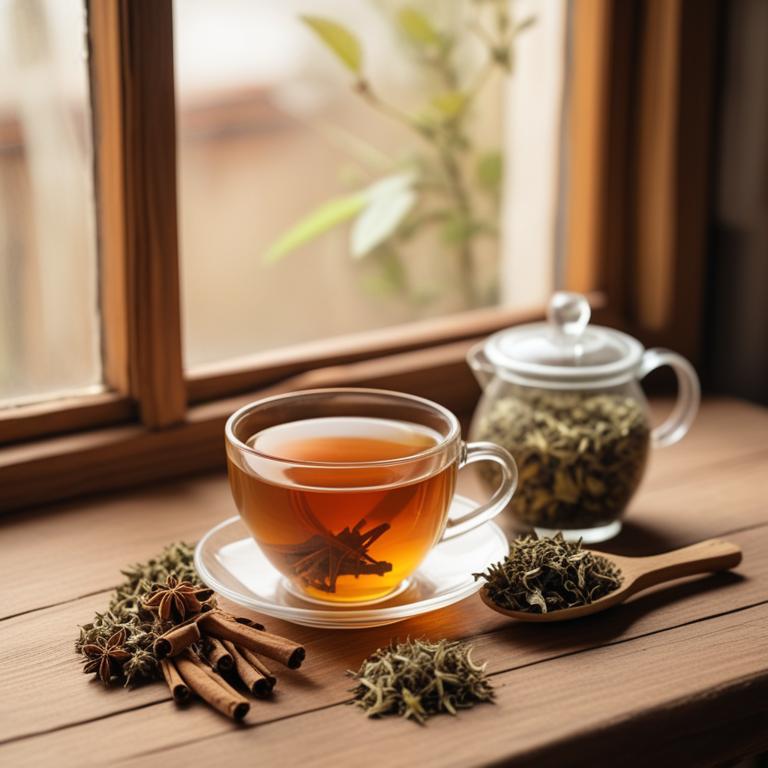
Cinchona officinalis teas have been traditionally used to treat leg cramps due to their antispasmodic and vasodilatory properties, which help to relax muscles and improve blood circulation.
This herbal preparation works by inhibiting the release of acetylcholine, a neurotransmitter that can cause muscle spasms, thereby reducing the severity and frequency of leg cramps.
The bioactive constituents of Cinchona officinalis teas, including quinine and alkaloids, contribute to their therapeutic effects, helping to prevent muscle cramps by blocking potassium channels and stabilizing muscle cell membranes.
The benefits of using Cinchona officinalis teas to treat leg cramps include rapid relief from symptoms, reduced muscle spasms, and improved overall muscle function, making it a natural and effective remedy for this common condition.
Recipe:
- Gather 2 teaspoons of dried Cinchona officinalis bark and 1 cup of boiling water.
- Steep the Cinchona bark in the boiling water for 5-7 minutes.
- Strain the liquid into a cup and discard the Cinchona bark.
- Add 1 tablespoon of honey (optional) to the tea and mix well.
- Drink the tea warm or at room temperature to help relieve leg cramps.
Cinchona officinalis teas can be used to treat leg cramps, but its use may cause side effects such as nausea, dizziness, and headaches in some individuals.
When using Cinchona officinalis teas to treat leg cramps, it is essential to take precautions, including starting with a low dose, avoiding consumption with other medications, and being aware of potential allergic reactions, as excessive use or sensitivity can exacerbate symptoms.
Cinchona Officinalis Tea on Amazon
Quina Roja(chinona) & Palo de Víbora Tea – 100% Natural, Vegan, Hecho en México | 25 Tea Bags
Disclaimer: We earn a commission if you click this link and make a purchase at no additional cost to you.
9. Foeniculum vulgare teas
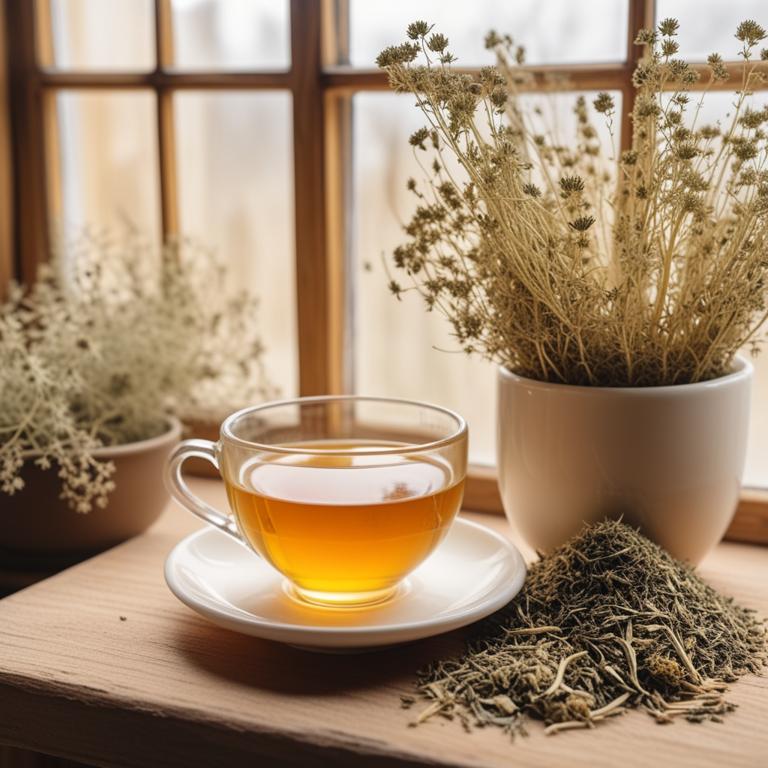
Foeniculum vulgare teas, also known as anise tea, have been traditionally used to treat leg cramps due to their anti-spasmodic and anti-inflammatory properties.
The herbal preparation helps to treat leg cramps by relaxing the muscles and reducing muscle spasms, providing relief from cramping and discomfort.
The bioactive constituents of Foeniculum vulgare, such as anethole and limonene, contribute to its therapeutic effects, as they have been shown to have a calming effect on the nervous system and reduce muscle contractions.
The benefits of using Foeniculum vulgare teas to treat leg cramps include its natural and non-addictive properties, making it a safe and effective alternative to traditional medications for muscle spasms.
Recipe:
- Gather 1 cup of fresh Foeniculum vulgare leaves or 2 tablespoons of dried leaves.
- Combine the Foeniculum vulgare leaves with 1 cup of boiling water in a heat-resistant cup.
- Let the mixture steep for 5-7 minutes, then strain the liquid.
- Add honey to taste, if desired, and stir well.
- Drink the tea 2-3 times a day, or as needed, to help relieve leg cramps.
Foeniculum vulgare teas can be used to help alleviate leg cramps, but possible side effects may include allergic reactions, stomach upset, or diarrhea, particularly if consumed in excess.
To use Foeniculum vulgare teas safely, it is recommended to start with small doses, avoid mixing with other medications or herbal supplements, and be cautious when consuming it during pregnancy or breastfeeding.
Foeniculum Vulgare Tea on Amazon
Fennel Tea - 100% Organic and Alkaline - 15 Unbleached/Chemical-Free Fennel Tea Bags - Caffeine-Free, No GMO
Disclaimer: We earn a commission if you click this link and make a purchase at no additional cost to you.
10. Piper nigrum teas
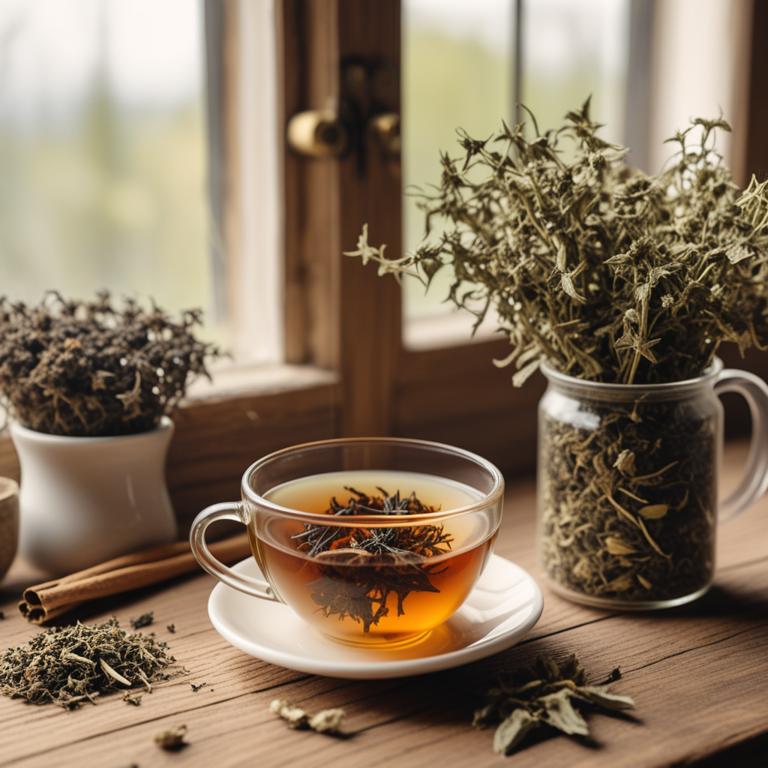
Piper nigrum teas, derived from the black pepper plant, have been traditionally used to treat leg cramps due to their analgesic, anti-inflammatory, and antispasmodic properties.
The bioactive constituents, including piperine and piperonal, in Piper nigrum teas help to reduce muscle spasms and inflammation, thereby alleviating leg cramp symptoms.
The antispasmodic effect of Piper nigrum teas helps to relax the muscles, reduce muscle spasms, and promote blood flow, thereby providing relief from leg cramps.
The benefits of using Piper nigrum teas to treat leg cramps include reduced frequency and severity of episodes, improved sleep quality, and a natural, non-invasive approach to managing this common health issue.
Recipe:
- Gather 2 tablespoons of dried Piper nigrum (black pepper) and 1 cup of boiling water.
- Steep the Piper nigrum in the boiling water for 5-7 minutes, then strain.
- Add 1 tablespoon of honey to the tea for taste, if desired.
- Drink the tea in 2-3 sips, 2-3 times a day, as needed for leg cramp relief.
- Store any leftover tea in the refrigerator for up to 24 hours.
Piper nigrum teas can be used to treat leg cramps due to its potential anti-inflammatory and antioxidant properties, but it may cause side effects such as dizziness, stomach upset, and allergic reactions in some individuals.
To use Piper nigrum teas safely, it is recommended to start with a small dose and gradually increase it, avoid consuming it on an empty stomach, and be cautious when combining it with other medications or supplements.
11. Melissa officinalis teas

Melissa officinalis teas, also known as lemon balm teas, have been traditionally used to treat leg cramps due to their calming and relaxing properties.
This herbal preparation helps to treat leg cramps by reducing muscle spasms and promoting overall muscle relaxation, thereby alleviating cramp-related discomfort.
The bioactive constituents of Melissa officinalis teas, including rosmarinic acid, apigenin, and linalool, contribute to their therapeutic effects by exerting anti-inflammatory, antioxidant, and antispasmodic activities.
Regular consumption of Melissa officinalis teas has been associated with several benefits, including improved sleep quality, reduced muscle tension, and enhanced overall well-being, making it a popular natural remedy for treating leg cramps.
Recipe:
- Gather 1 cup of fresh Melissa officinalis leaves or 1 teaspoon of dried leaves.
- Heat 1 cup of water in a pot until it boils.
- Add the Melissa officinalis leaves to the boiling water and let it simmer for 5-7 minutes.
- Strain the liquid and discard the leaves. Let the tea cool down.
- Drink 1/2 cup of the tea 2-3 times a day to help with leg cramps.
Melissa officinalis teas can be used to treat leg cramps, but possible side effects may include gastrointestinal upset, such as nausea and vomiting, and allergic reactions, like skin rashes and itching.
Precautions to take when using Melissa officinalis teas include avoiding them in large quantities, as excessive consumption may lead to interactions with other medications and exacerbate underlying health conditions, and being cautious when using them during pregnancy or breastfeeding, as there is limited research on their effects in these situations.
Melissa Officinalis Tea on Amazon
Maxx Herb Lemon Balm Extract - Max Strength Liquid Tincture Absorbs Better Than Capsules or Tea, for Nervous System Support, & Stress Management - Alcohol Free - 4 Oz Bottle (60 Servings)
Disclaimer: We earn a commission if you click this link and make a purchase at no additional cost to you.
12. Hypericum perforatum teas
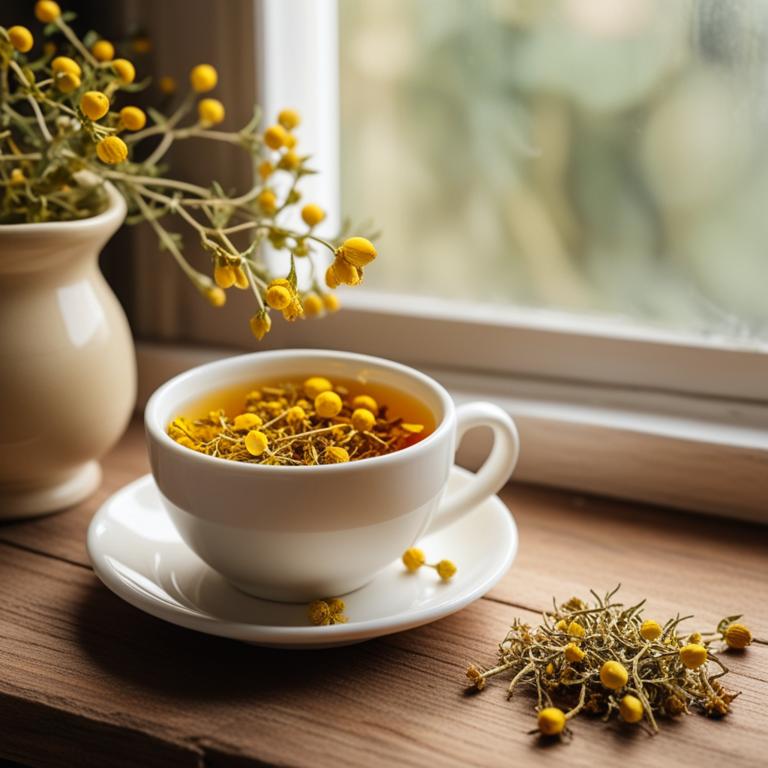
Hypericum perforatum teas, also known as St. John's Wort, have been traditionally used to treat leg cramps due to their anti-inflammatory and antispasmodic properties.
The bioactive constituents, including flavonoids and phenolic acids, help to relax the muscles and reduce muscle spasms, thereby alleviating leg cramp symptoms.
The benefits of using Hypericum perforatum teas to treat leg cramps include reduced muscle tension, improved circulation, and a decrease in the frequency and severity of cramps.
By using this herbal preparation, individuals can find relief from the discomfort and pain associated with leg cramps, promoting overall well-being and a better quality of life.
Recipe:
- Gather 1 cup of fresh Hypericum perforatum flowers or 2 tablespoons of dried flowers.
- Add the flowers to 1 cup of boiling water and remove from heat.
- Steep the mixture for 5-7 minutes, then strain it into a cup.
- Add honey or lemon to taste, if desired, and mix well.
- Drink the tea as needed for leg cramps, but not more than 2 cups per day.
Hypericum perforatum teas can be used to treat leg cramps, but they may cause side effects such as stomach upset, dizziness, and allergic reactions in some individuals.
To avoid these issues, it is essential to start with a low dose and gradually increase it, and to also be cautious of interactions with other medications, especially those used to treat depression or blood thinning.
Hypericum Perforatum Tea on Amazon
Horbäach St Johns Wort Tincture | 2 Fl Oz | Alcohol Free | Vegetarian Liquid Extract | Non-GMO, Gluten Free Supplement
Disclaimer: We earn a commission if you click this link and make a purchase at no additional cost to you.
13. Ginkgo biloba teas

Ginkgo biloba teas have been traditionally used to treat leg cramps due to their ability to relax muscle spasms and improve blood circulation.
The bioactive constituents present in Ginkgo biloba teas, such as flavonoids, terpenoids, and bilobalide, help to reduce muscle spasms and alleviate cramping by inhibiting the release of acetylcholine, a neurotransmitter involved in muscle contraction.
The flavonoids and terpenoids in Ginkgo biloba teas also have anti-inflammatory properties, which help to reduce swelling and pain associated with muscle cramps.
By promoting relaxation and reducing inflammation, Ginkgo biloba teas offer a natural and effective way to alleviate leg cramps and improve overall muscle health.
Recipe:
- Gather 1 cup of water and 1 teaspoon of dried Ginkgo biloba leaves.
- Boil the water in a pot and let it cool for 5 minutes.
- Add 1 teaspoon of dried Ginkgo biloba leaves to the cooled water.
- Steep the mixture for 5-7 minutes, then strain the liquid.
- Drink 1 cup of the Ginkgo biloba tea 2-3 times a day to help with leg cramps.
Ginkgo biloba teas can be used to treat leg cramps, but possible side effects may include dizziness, nausea, and stomach upset due to its blood-thinning properties.
To use Ginkgo biloba teas safely, it's recommended to monitor blood pressure and bleeding risks, especially when taking anticoagulant medications or having a history of bleeding disorders, and to avoid consuming it before surgery or with other stimulants.
Ginkgo Biloba Tea on Amazon
Tai Chi Think Sharp Energizing Tea (Ginseng Ginkgo Biloba) 12 Bags
Disclaimer: We earn a commission if you click this link and make a purchase at no additional cost to you.